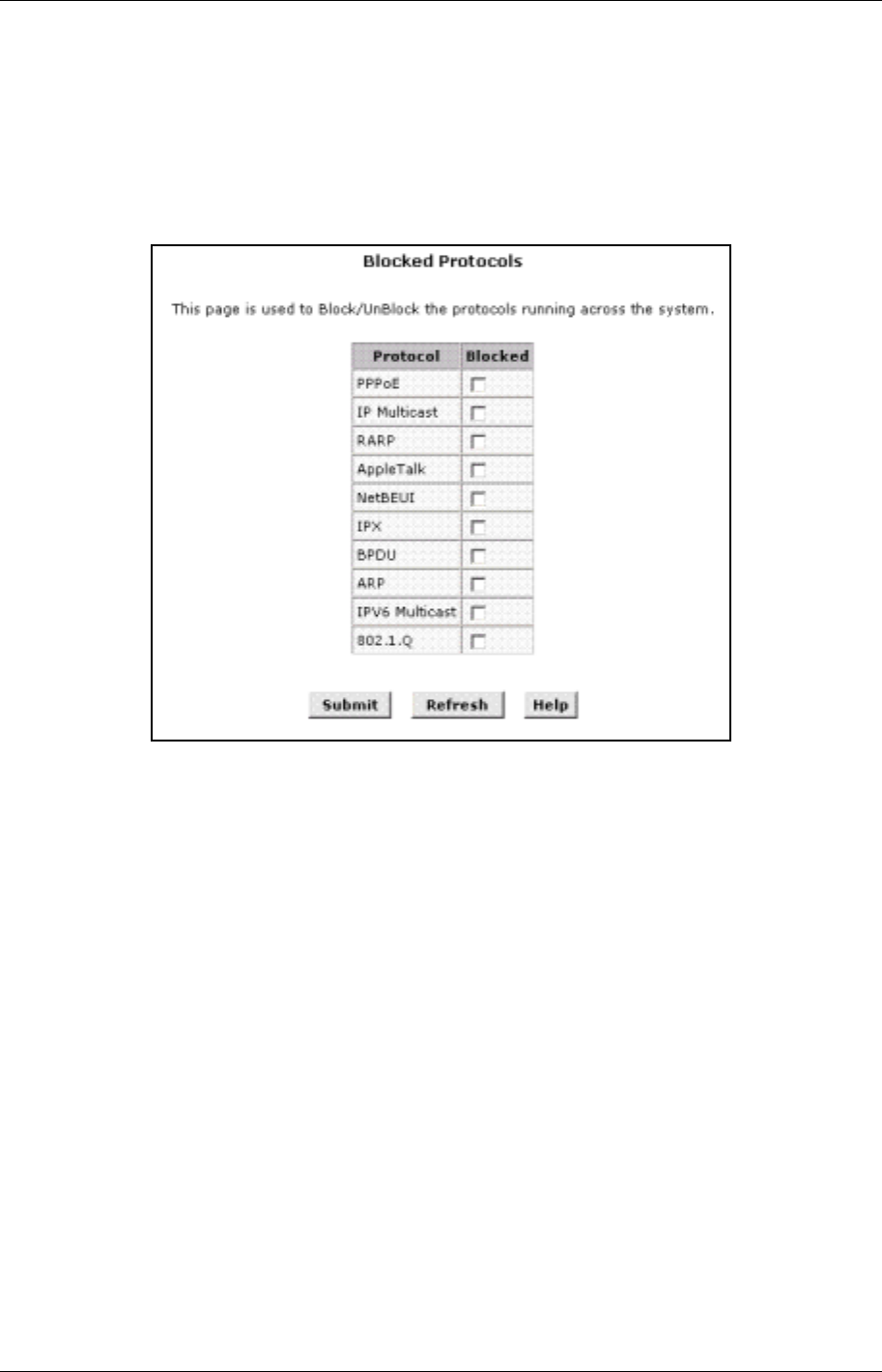
DSL-500G ADSL Router User’s Guide
Blocked Protocols
The Router is capable of sending and receiving information in a variety of protocol formats. The Blocked
Protocols feature enables you to prevent the Router from passing any data that uses a particular protocol. Unlike
the IP Filter feature, you cannot specify additional criteria for blocked protocols, such as particular users or
destinations. However, when you are certain that a particular protocol is not needed or wanted on your network,
this feature provides a convenient way to discard such data before it is passed.
Figure 27. Blocked Protocols
The following list describes each of the listed protocols.
• PPOE: Point to Point Protocol over Ethernet. Many DSL modems use PPoE to establish and maintain a
connection with a service provider. PPoE provides a means of logging in to the ISPs servers so that they
can authenticate you as a customer and provide you access to the Internet. Check with your ISP before
blocking this protocol.
• IP Multicast: IP Multicast is an extension to the IP protocol. It enables individual packets to be sent to
multiple hosts on the Internet, and is often used for handling e-mail mailing lists and
teleconferencing/videoconferencing.
• RARP: Reverse Address Resolution Protocol. This IP protocol provides a way for computers to
determine their own IP addresses when they only know their hardware address (i.e., MAC addresses).
Certain types of computers, such as diskless workstations, must use RARP to determine their IP address
before communicating with other network devices.
• AppleTalk®: A networking protocol used in for Apple Macintosh® networks.
• NetBEUI: NetBIOS Enhanced User Interface. On many LAN operating systems, the NetBEUI protocol
provides the method by which computers identify themselves to and communicate with each other.
• IPX: Internetwork Packet Exchange. A networking protocol used on Novell Netware ®-based LANs.
• BPDU: Bridge Protocol Data Unit. BPDUs are data messages that are exchanged across the switches
between LANs that are connected by a bridge. BPDU packets contain information on ports, addresses,
priorities and costs, and are exchanged across bridges to detect and eliminate loops in a network.
• ARP: Address Resolution Protocol. Computers on a LAN use ARP to learn the hardware addresses (i.e.,
MAC addresses) of other computers when they know only their IP addresses.
44


















